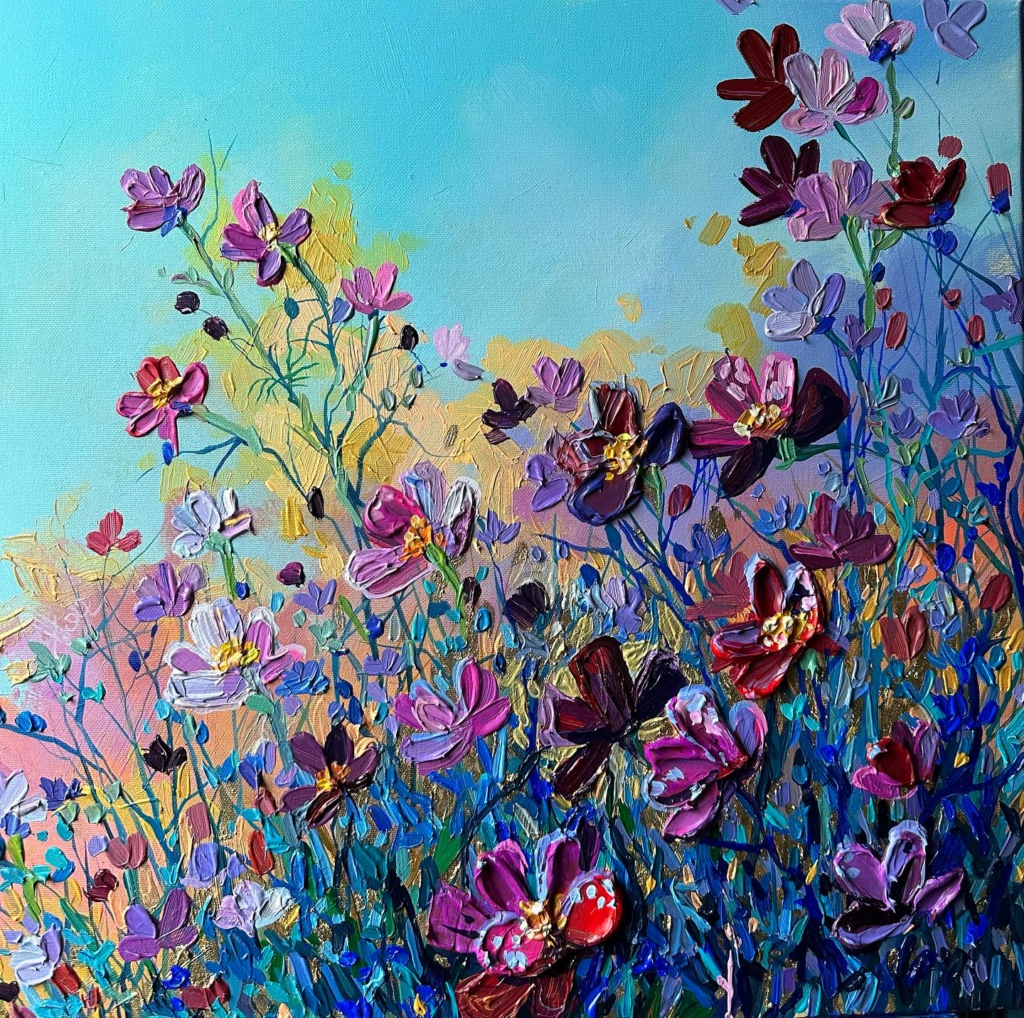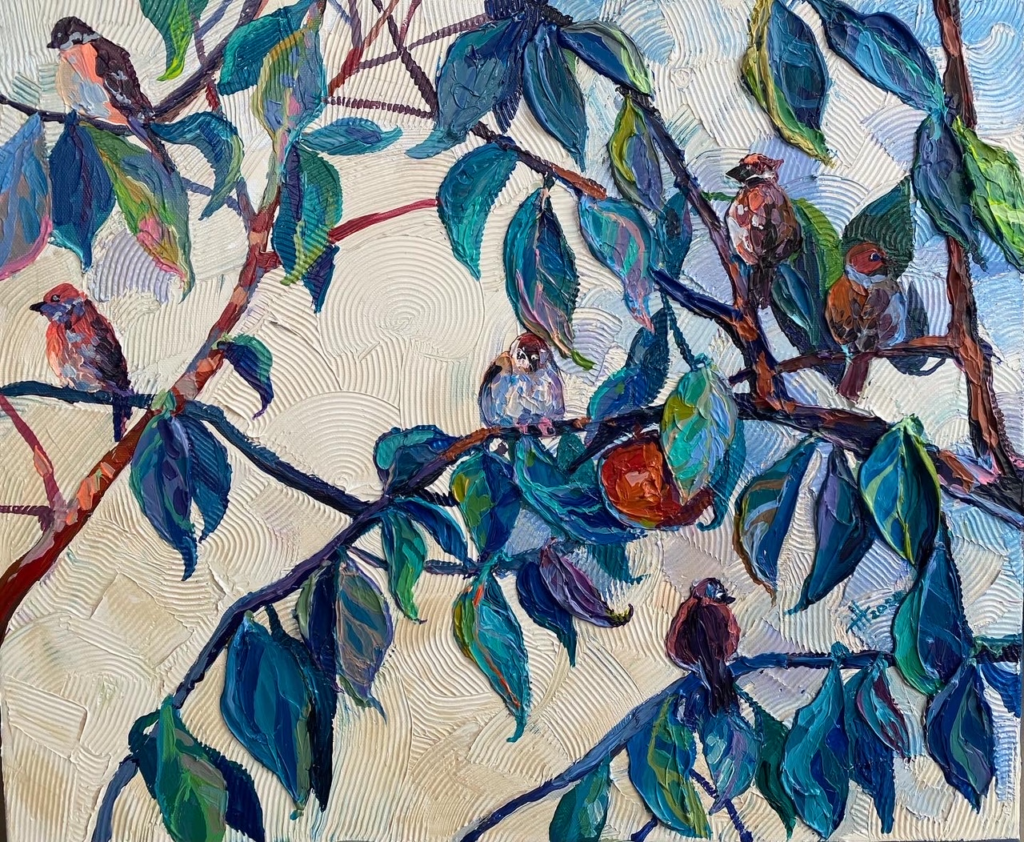by Tyler Elks
Here at Ignite Studio, we have a few different paint kits for you to check out. Amongst these kits are our Acrylic Paint Kits in the Adult Kit Library. Want to know how to add texture to your art while using these kits? Here are some examples of texture, and later in the post we’ll go over a few ways to achieve texture in your paintings.
Examples of Texture in Painting
Petals

Image: Anastasia Trusova
Flowers are one of my favorite things, so perhaps I’m a bit biased. But the first thing I thought of when this topic came up was how I could paint flowers! Pictured above is a painting by artist Anastasia Trusova who regularly uses different textures in her art. It makes me feel like I’m in the field with the flowers!
Leaves

Image: Anastasia Trusova
Flowers are great, but not all plants have petals. Most of them have leaves though! Why not add a little extra “oomph” to your painting and really make those leaves pop by adding a bit of texture to them? This is another great piece from Trusova that shows just how creative you can get by adding even a little bit of texture.
Portraits

Image: Dimirti Sirenko
Think outside the natural world when you think about texture. Artist Dimirti Sirenko effectively uses texture to create this unique portrait.
Landscape

Image: Anastasia Trusova
In my opinion landscape or scenery paintings are really where texture shines. Look at the different uses of texture in this piece from the snow to the trees, to the branches in the foreground. There is little you can’t do with texture!
Abstract

Image: Tat Georgieva
Of course, you could also go all in and do an abstract design. You can use varying textures and sizes or use one style for a more uniform look. Either way, you’ll be creating a frame-worthy masterpiece!
How to Add Texture to Your Art
Now that we’ve seen a few different examples of what you can do with texture, let’s look at how you can do it!
Palette Knife

Image: Suraj Fine Arts
Using a palette knife, you can build up layers of paint and smooth them onto your canvas–kind of like spreading peanut butter on your toast! Palette knives help you shape larger blobs of paint by giving you a bigger tool to work with.
Splattering

Image: Silver Studio Creek
Using a paintbrush, gather up some paint and flick it onto the canvas to create a spattered effect. This would be good for rain, snow, or small light effects!
Sponge

Image: Art box Studio
Using a sponge on your painting is a simple and easy way to get a range of textures. The design feels organic, and you can change the look of your art entirely by adjusting the pressure or angle of the sponge.
Sgraffito

Image: Joseph Villanueva
Using a palette knife, skewer, toothpick, or just your finger, you can scratch a design into the painting to create a layered effect and add depth to your art. This technique is great for little details as well, or you can use it to make a wonderful abstract piece.
I hope this has inspired you to pick up the brush and experiment with our Acrylic Paint Kit. I mean, I certainly feel inspired. I may even go check out the kit as soon as I’m done writing this blog post! Happy making!


